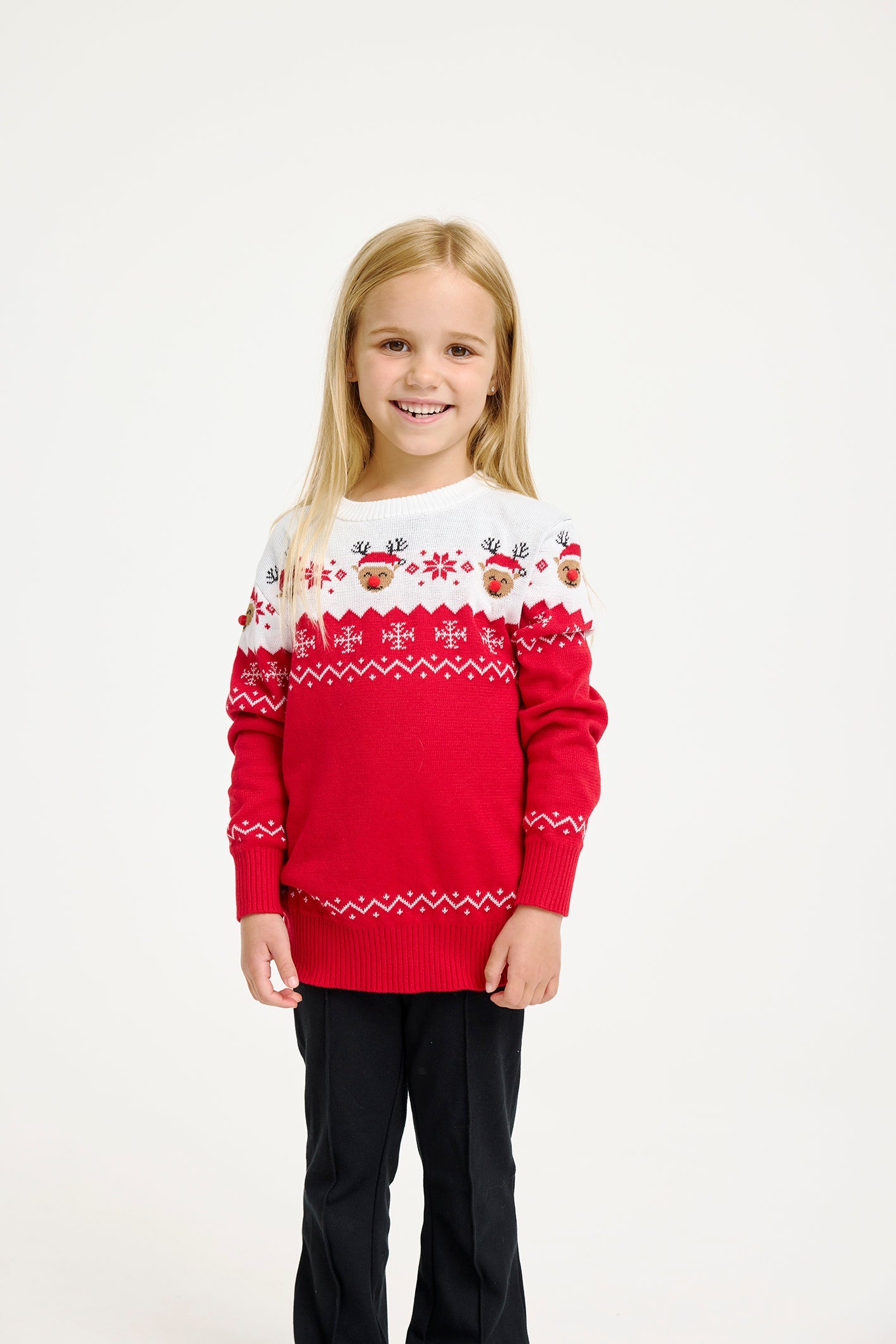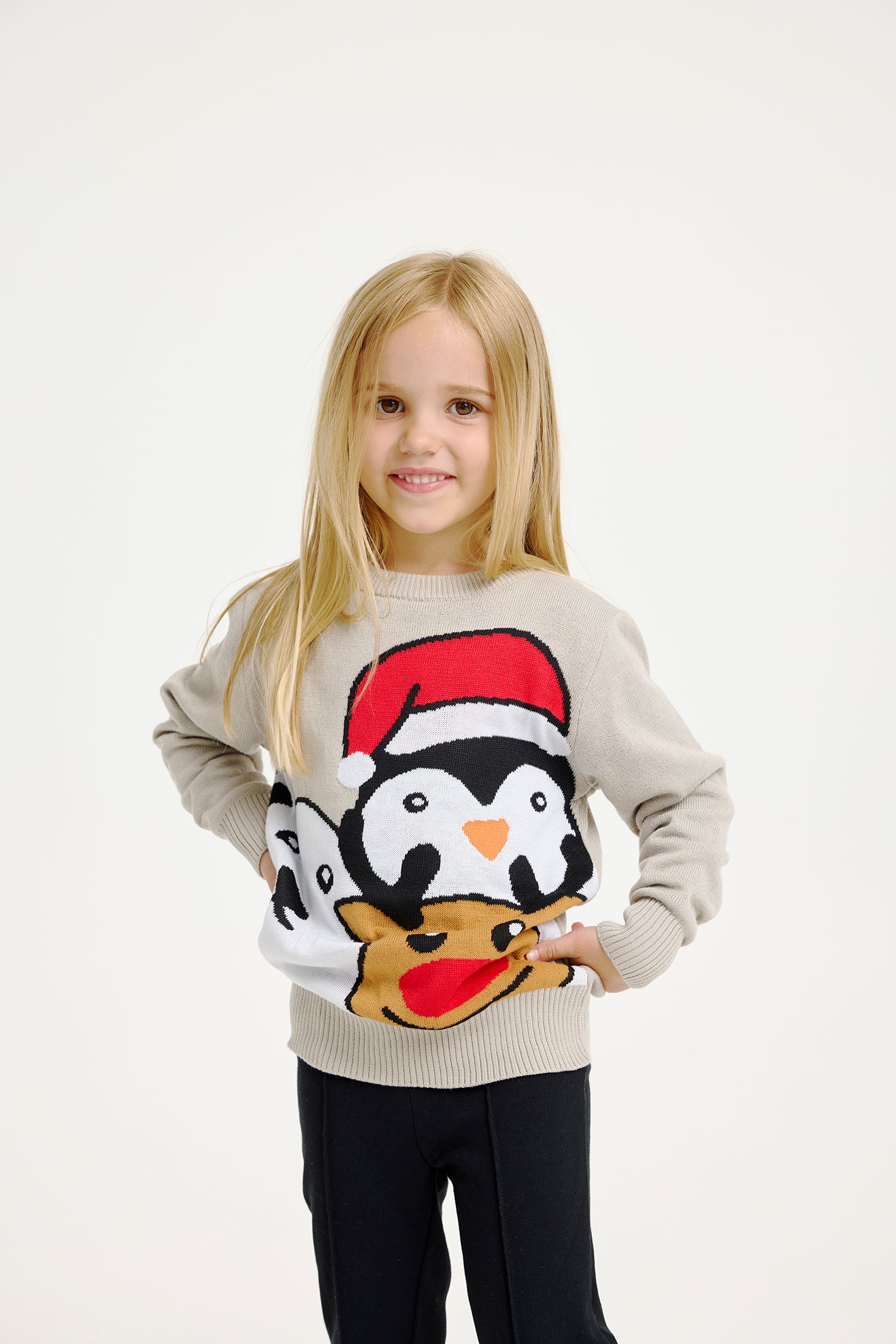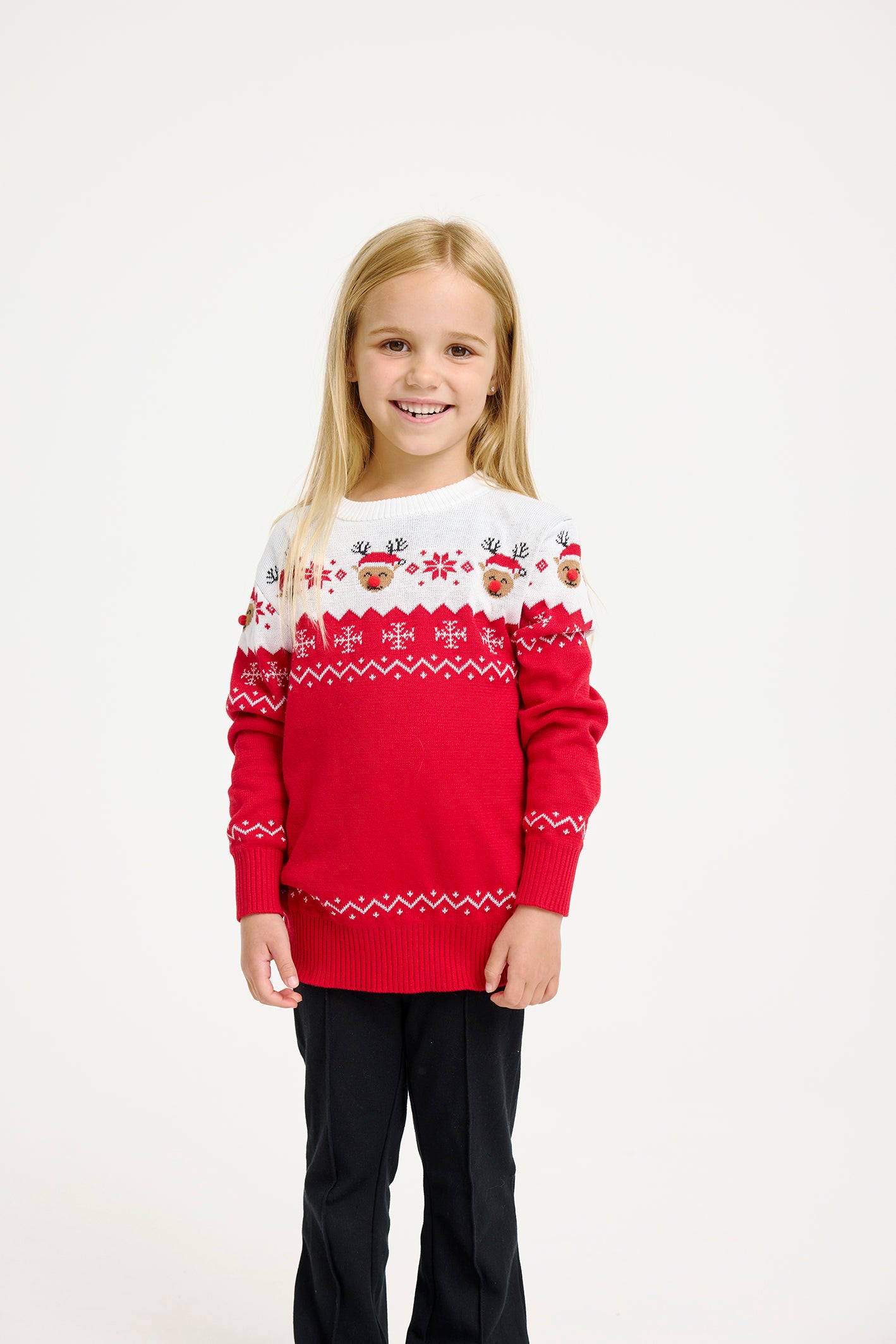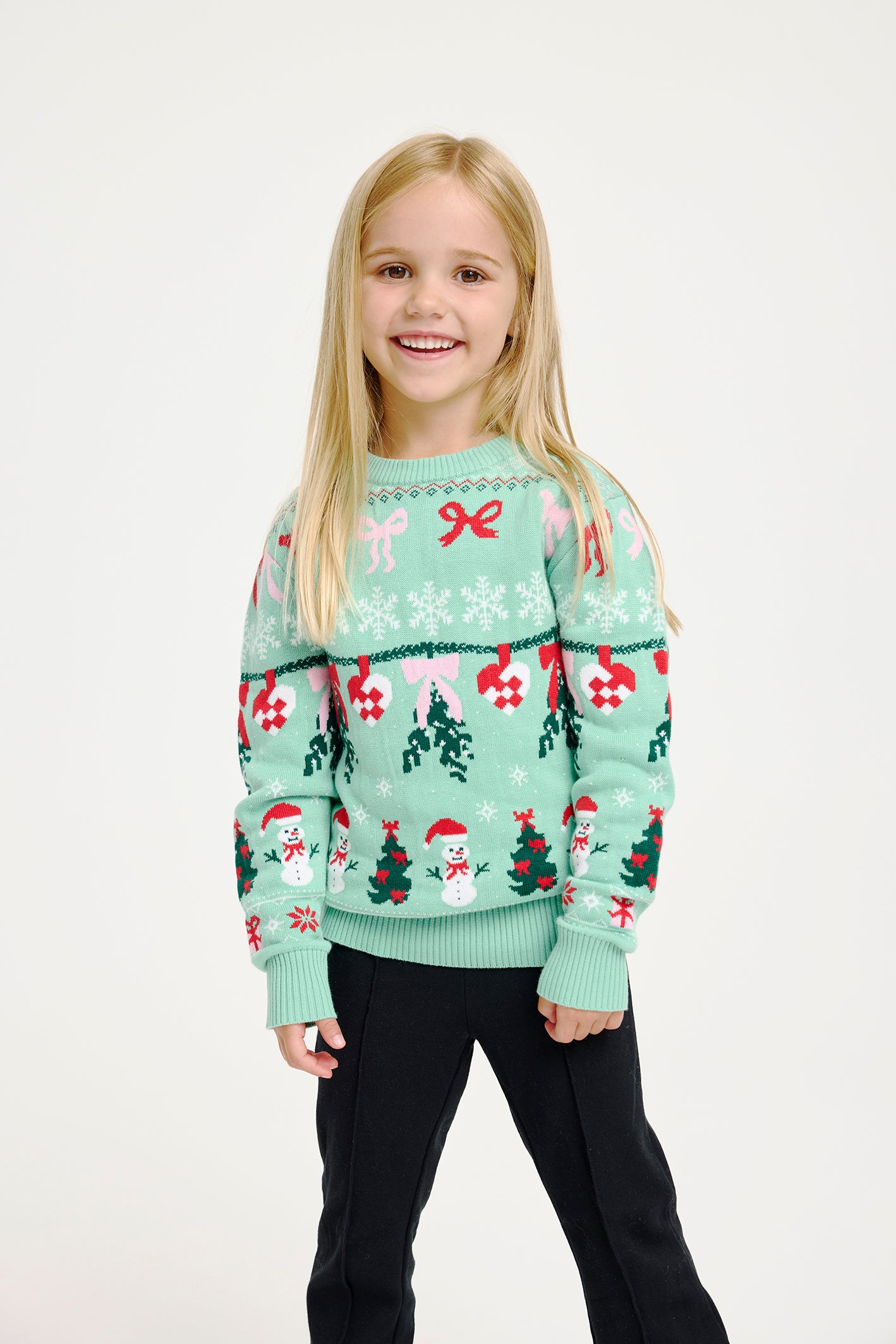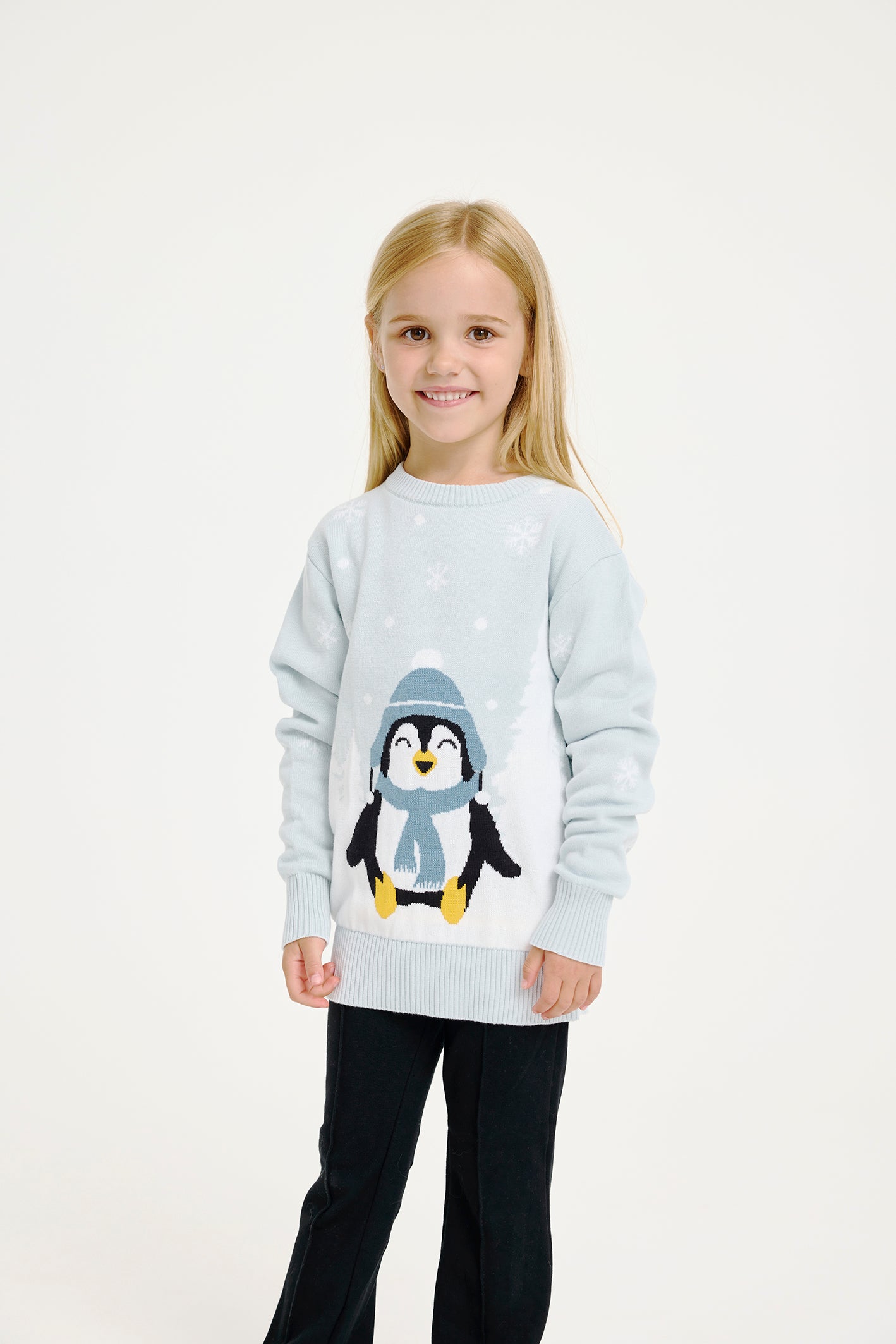23 October 2025
Christmas crafts for kids: Ideas and how-to's

Christmas crafts for kids are simple, creative activities that build fine motor skills, start little holiday traditions and create moments of shared time between children and grown-ups. Begin with a tiny project or a longer guided piece, and let the results become keepsakes you can display while everyone wears coordinating outfits like kids Christmas sweaters for family photos kids Christmas sweaters.
What this post covers: A compact selection of easy, age-graded projects (paper, salt dough, felt and recycled materials), clear materials lists later in the guide, step-by-step directions, time and difficulty estimates, and ideas for adapting each activity for home or classroom use.
Quick craft categories
- Quick and tiny (5–20 minutes): Toddlers and preschoolers, sticker and collage-based projects that finish fast.
- Hands-on favourites (20–60 minutes): Preschool to early school age, paper chains, simple dough ornaments and recycled-material figures.
- Guided handiwork (30–90 minutes): Older kids doing basic sewing or more detailed painting with adult help.
Safety and prep tips
Note: Supervision levels vary by activity. Keep scissors and small beads away from very young children, have adults handle oven steps for dough projects, and reserve hot glue or needles for supervised sessions. Choose non-toxic, washable supplies where possible and lay down a work mat to simplify cleanup. After crafting, settle in with matching Christmas pajamas or invite adults to join in with funny Christmas jumpers for a relaxed, celebratory finish matching Christmas pajamas and funny Christmas jumpers for parents who want to join the fun.
Paper crafts for tiny hands
Paper projects are perfect when time is short and results are immediate. Use simple folding and cutting techniques to teach symmetry and scissor control while producing decorations that can be strung up or gifted.
Materials: Plain or coloured paper, safety scissors, glue or stapler, crayons or markers, string.
How to: Fold paper for snowflakes, cut strips for chains and staple or glue each loop, or trace a simple tree shape and let children decorate the surface with stickers and drawings.
Age and timing: Suitable for toddlers with help and for early school-age children working independently; 10–30 minutes depending on complexity.
Variations: Add sequins or stickers, backlight cut snowflakes on windows, or create a garland from alternating paper shapes to decorate a mantel.
Salt-dough ornaments you can bake together
Salt-dough is tactile, inexpensive and ideal for making keepsakes that children paint when dry. The recipe below is straightforward and safe when adults handle oven steps.
Materials
- Plain flour
- Table salt
- Water
- Cookie cutters or a knife for freehand shapes
- Acrylic paint or food colouring
- Optional clear water-based varnish
Sådan gør du:
- Mix 2 parts flour with 1 part salt in a bowl, then add water gradually until a smooth dough forms.
- Roll the dough to about 1 cm thickness and cut shapes with cutters or a blunt knife.
- Use a straw to make a hanging hole near the top of each piece.
- Bake at low temperature such as 100–120°C until completely hard; adults should handle the oven.
- Cool fully, then paint and seal if desired.
Tip:
Paint only after the pieces are fully cooled to avoid soft spots. Seal with a thin layer of water-based varnish to help ornaments last through years of handling.
Recycled-material figures and collage
Turn household bits into charming characters: toilet-roll Santas, bottle-cap snowmen and cardboard tree ornaments offer open-ended play and decoration opportunities.
Materials: Cardboard tubes, bottle caps, scrap paper, glue, washable paint, felt scraps and yarn.
How to: Encourage stamping, collage layers and handprint additions. Let children plan a face or pattern before assembling to practice sequencing and planning.
Age and timing: Great for toddlers and preschoolers with simple gluing and decorating; 15–40 minutes.
Felt and simple sewing projects
Sewing small ornaments teaches hand-eye coordination and patience. Use blunt needles for beginners and consider a glued, no-sew option for very young crafters.
Materials
- Felt sheets
- Blunt sewing needles or plastic needles for kids
- Embroidery thread
- Stuffing for ornaments
- Fabric glue as a no-sew alternative
Sådan gør du:
- Cut two matching shapes from felt using a simple heart or star template.
- Sew the pieces together with a basic running stitch, leaving a small gap for stuffing.
- Stuff lightly and close the gap, then add a loop of thread for hanging.
Tip:
Use fabric glue to seal edges instead of stitching for a quick, child-friendly version. Add a name with a fabric marker to make each piece personal.
Handprint keepsakes and quick beaded ornaments
Handprint art becomes a treasured gift. Work with washable paint or ink pads, press carefully and add drawn details to transform prints into Santa, reindeer or wreaths.
Beaded ornaments give fine-motor practice: choose large beads or pipe cleaners for younger children, and plan patterns before stringing to practise sequencing.
Age and timing: Handprints suit all ages with washable materials; bead projects are ideal for preschool and school-age children, 10–40 minutes.
Nature-based decorations and classroom templates
Pinecones and twigs make rustic ornaments after cleaning and drying. For larger groups, printable templates for tree decorations streamline workflow: set up a colouring station, cutting station and assembly table so every child moves through the same short task list.
Materials: Pinecones, twine, PVA glue, paint and printable cardstock templates for classroom use.
Age and timing: Preschool children can decorate prepared pinecones with supervision; classroom template projects scale well for groups and usually run 15–30 minutes per station.
Pair finished crafts with festive outfits for photo moments and seasonal display—for example, include kids Christmas sweaters in family photos to make the results feel like part of the holiday wardrobe and tradition. See more options for kids Christmas sweaters to match handmade ornaments and pajama nights.
Project planning and quick reference
Planning: Start by deciding how much active time you want to spend, and set up stations so the room hums with gentle activity rather than chaos. Lay out materials in small trays, label stations with simple icons, and keep a drying rack or baking tray to one side for painted or baked items. The smell of fresh pine and warm cookies helps settle the group as carols play softly in the background.
Quick reference by project:
- Paper snowflakes. Active time: 10–20 minutes. Age range: 3+. Main materials: Paper, safety scissors, string. Supervision level: Low.
- Salt-dough ornaments. Active time: 30–60 minutes. Total time: 2–4 hours including baking. Age range: 4+. Main materials: Flour, salt, water, paint. Supervision level: Medium, adults handle the oven.
- Recycled figures. Active time: 15–40 minutes. Age range: 2+. Main materials: Cardboard tubes, bottle caps, glue, paint. Supervision level: Low.
- Felt ornaments. Active time: 30–60 minutes. Age range: 5+. Main materials: Felt, blunt needles, thread, stuffing. Supervision level: Medium.
- Handprint keepsakes. Active time: 10–30 minutes. Age range: All. Main materials: Washable paint, paper or canvas. Supervision level: Low.
Classroom and party adaptations
Station setup: Arrange a colouring and cutting station, a glue-and-decorate station and a finishing station for loops and labels. Volunteers can welcome small groups and keep the flow moving. For party-style events, offer premade kits in paper bags so each child can pick a theme and take home a neat bundle of materials.
Group management: Limit colour choices per station to reduce mess. Number trays and pass them along so children move methodically from one task to the next. Use clothespins or pegs to give each project a spot on the drying line.
Accessibility and sensory-friendly options
Tactile alternatives: Choose soft foam, felt or large wooden beads instead of small beads or glitter. Visual supports: Provide step-by-step picture cards and one-step-at-a-time instructions for those who prefer visual cues. For quieter spaces, offer headphones with gentle holiday music or a silent colouring corner with cozy cushions and a dim lamp.
Cleanup and storage tips
Quick cleanup: Cover tables with washable mats or butcher paper, keep baby wipes and a damp cloth close by, and use lidded pots for paints. Storage: Label each ornament with a name and year, then store flat in small boxes or wrap in tissue to protect delicate pieces. The warmth from a soft throw and the scent of cinnamon can make tidying feel like part of the tradition.
Troubleshooting common issues
Dough problems: If dough is too sticky, add a little more flour. If it crumbles, add a splash of water and knead gently. Paint cracking on baked dough: Ensure pieces are completely cool and dry before painting and apply thin layers of paint. Small parts hazard: Replace tiny beads with larger alternatives for younger participants and keep a close eye on everyone during gluing and cutting.
Finishing touches and display ideas
Personal touches: Add names with fabric markers on felt ornaments or write the year on the back of salt-dough pieces. For a cozy photo moment, slip a child into a soft kids Christmas sweater or match the family in kids Christmas pajamas while you hang the finished decorations. The sight of tiny handmade ornaments against a slowly glowing tree is a small, perfect tradition.
Frequently asked questions
What are the best crafts for toddlers?
Use simple stamping, handprint keepsakes, paper chains and decorating pre-cut shapes with stickers and crayons. Choose non-toxic, washable materials and supervise scissors and small parts closely.
How can I make salt-dough ornaments safely at home?
Mix flour and salt, add water to form a dough, roll to even thickness and cut shapes. Bake at low temperature until hard and cool fully before painting. Adults should handle oven steps and choose non-toxic paints and sealants.
Which projects work best for a classroom with 20 or more children?
Station-based paper crafts, pre-cut felt shapes for glue-on decoration and staggered handprint cards work well. Prepare materials in advance and use volunteers to supervise each station for smooth flow.
How do I adapt crafts for limited budgets or scarce supplies?
Emphasize recycled materials such as toilet rolls, cardboard and bottle caps. Limit colour choices, share communal paint pots and offer no-sew alternatives like fabric glue to reduce costs.
What materials should I avoid for very young children?
Avoid small choking-sized beads, sharp needles and toxic glues or paints. Instead pick large beads, blunt needles and certified non-toxic art supplies.
How can crafted ornaments be preserved long-term?
Fully dry or bake dough items before painting, seal with water-based varnish or clear acrylic spray in a ventilated area and store ornaments flat or cushioned to prevent breakage.
Also view
27 October 2025
As of 27 October 2025 there are 58 days until Christmas Eve on 24 December 2025. Some counters may show 60 days because they update at...

























